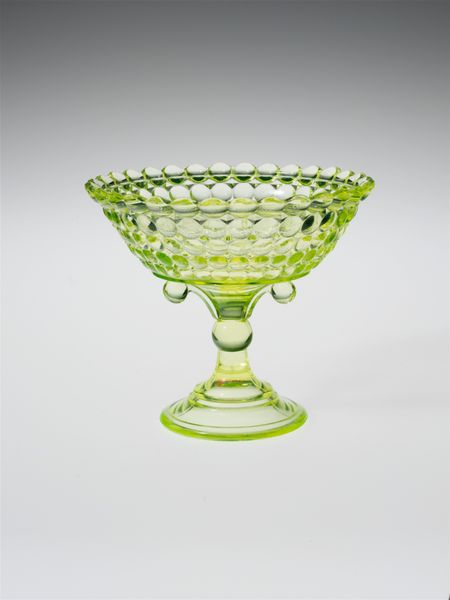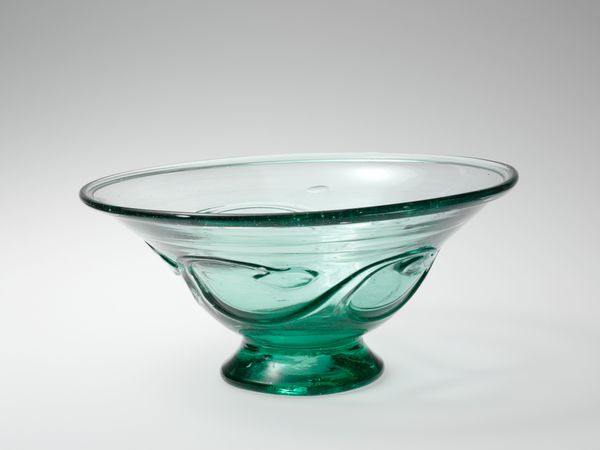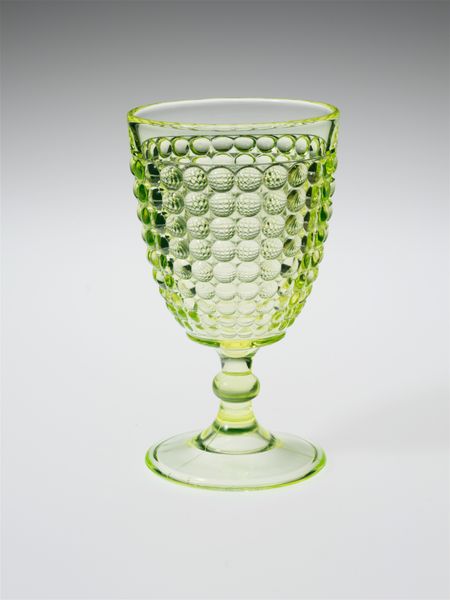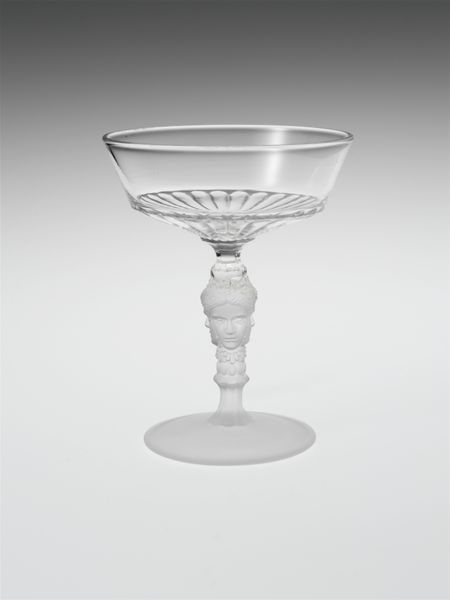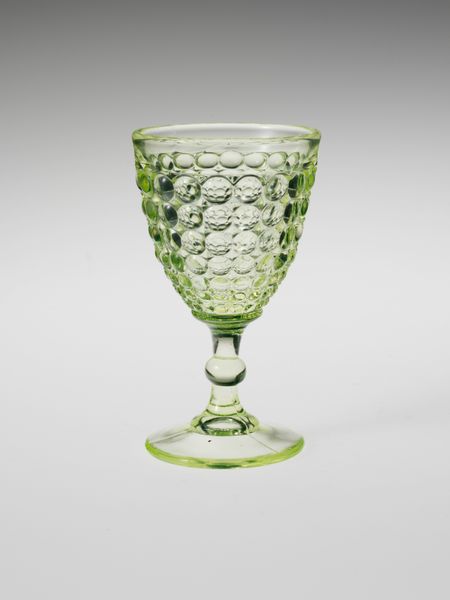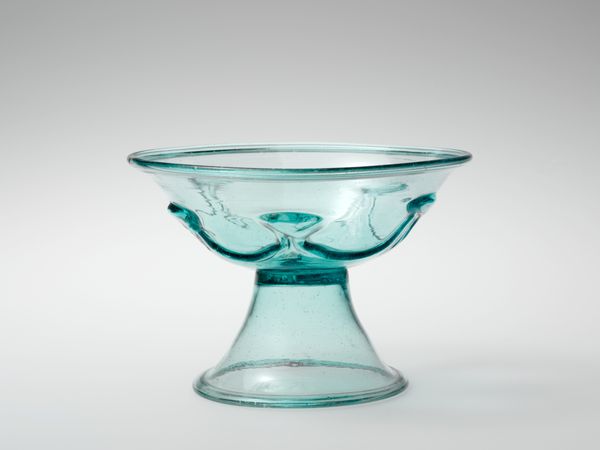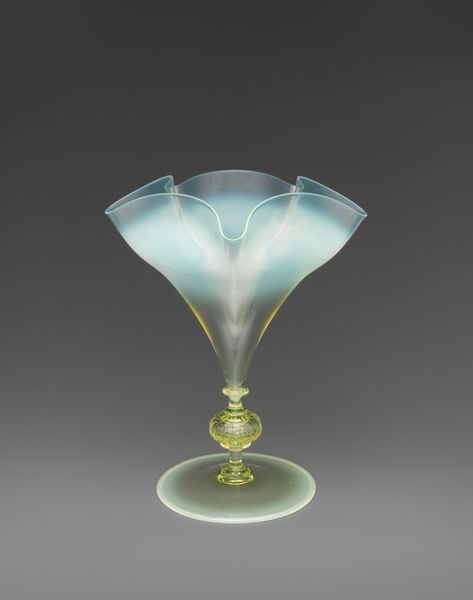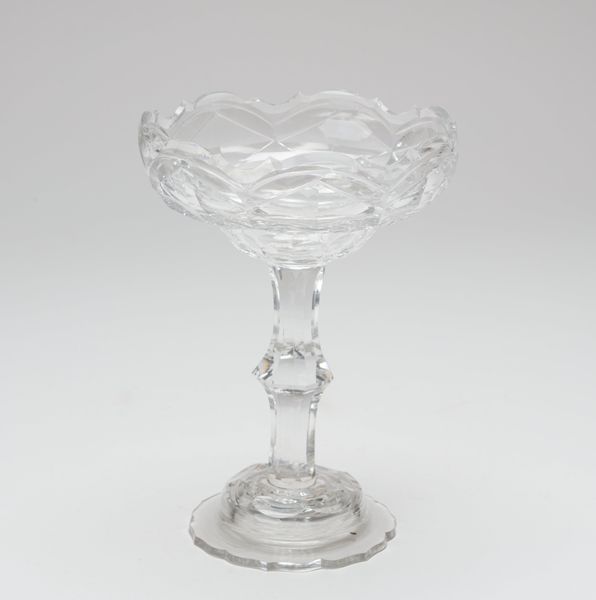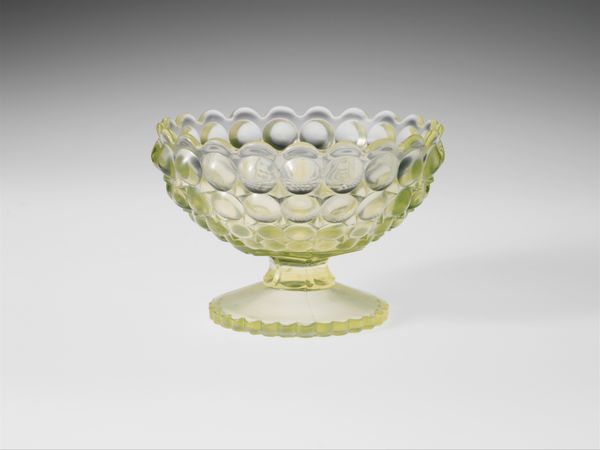
glass
#
art-nouveau
#
glass
#
decorative-art
Dimensions: H. 5 3/4 in. (14.6 cm); Diam. 8 5/8 in. (21.9 cm)
Copyright: Public Domain
This compote was made by Adams and Company, using pressed glass, a technique perfected in the 19th century. Molten glass was forced into a mold, allowing for rapid, inexpensive production. Notice the distinctive "hobnail" pattern, achieved through the mold. This texture refracts light beautifully, enhancing the glass's inherent sparkle. The choice of vibrant green, likely achieved with uranium oxide, adds to its visual appeal. But beyond aesthetics, this compote speaks to the rise of industrial manufacturing. Pressed glass democratized luxury, bringing once-exclusive items to a wider market. This piece reflects the Victorian era’s fascination with both technological innovation and decorative excess, but also the labor involved in mass production. It asks us to consider how objects, even those seemingly simple, are deeply embedded in social and economic histories. By considering materiality, making, and historical context, we can better understand the layers of meaning embedded in this compote.
Comments
No comments
Be the first to comment and join the conversation on the ultimate creative platform.
